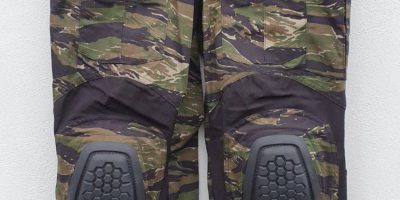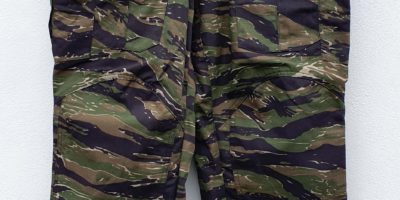I mentioned over the weekend I’d be sharing a very important article; why important? Because if you’ve read the aforementioned post along with perhaps some of my previous posts about layering as a system for inclement weather, then this piece right here is THE definitive guide all written down in one place.
There’s a couple of good online resources about PCU (though not too much that’s recent) and ITS Tactical not only has one of the newest written pieces on the subject but between their YouTube channel and website it’s certainly one of the best resources when it comes to this topic. Especially how it relates to the military and any outdoor pursuit, be it camping, hiking, hunting, extended types of airsoft games or anything else where you need to look after yourself away from hard shelter.
If you’re perhaps still scratching your head on what PCU stands for, it’s Protective Combat Uniform, and has been issued in various forms to US SF for many years now; longer than you’d probably expect given the fabric technology used. The standard US Army clothing system known as ECWCS (extended cold weather clothing system) works off essentially the same numbering and layering system. There’s slight variations in patterns, cut and fabrics but it’s overall really quite close to PCU. Now the old CS95 we used to have here was a rather obsolescent interpretation of the same idea but PCS implementation has brought our issued kit much closer to PCU and ECWCS, with the main exception of a lack of Level 5 softshell layer and that we’re hanging on to the smock.
The general concept and the archetypes of clothing items you find within each level of PCU can be seen mirrored in various civilian style outdoor/mountaineering type clothing lines produced by all sorts of companies.
Gaining an understanding of what each layer or level can do for you will be truly invaluable knowledge. Often a manufacturer will work to the same system but won’t use the numbering in their product nomenclature, leaving you the consumer to figure things out. Arc’teryx being a key example but O P Tactical Gear Store have a great sub-section of their clothing section which assigns layer numbers to items for you. However once you have this sort of information yourself you will make you look back and think “bloody hell I was doing seriously stupid stuff before” AND crucially you’ll be able to instantly recognise where any given item you’re looking at buying will fit in with the rest of your gear and whatever your end usage is for said gear.
Now, you don’t need to own every layer from 1 to 7 to utilise this sort of setup, far from it actually. You will basically never end up wearing every layer at once. But from the perspective of the duty and hobby usages you personally are most likely envisaging, the fact these items are so widely issued by the military means you can pick them up relatively cheaply as surplus and integrate them in to your gear bags and loadouts.
Now this is a long old read, no doubt, but if this is a new subject to you don’t fret at first like I did when I was trying to gain and understanding. If you can just grasp the basic intentions and the foundation of what the key layers will (and won’t) do for you then you’ll be in a far better position of understanding than you were yesterday, I absolutely guarantee that.




Leave a Reply